Art Fairs
What’s Next for Art? Looking at 3 Bleeding-Edge Artists at the Armory Show
Artnet's editor-in-chief Andrew Goldstein set out to find the most pathbreaking artworks at this year's fair.
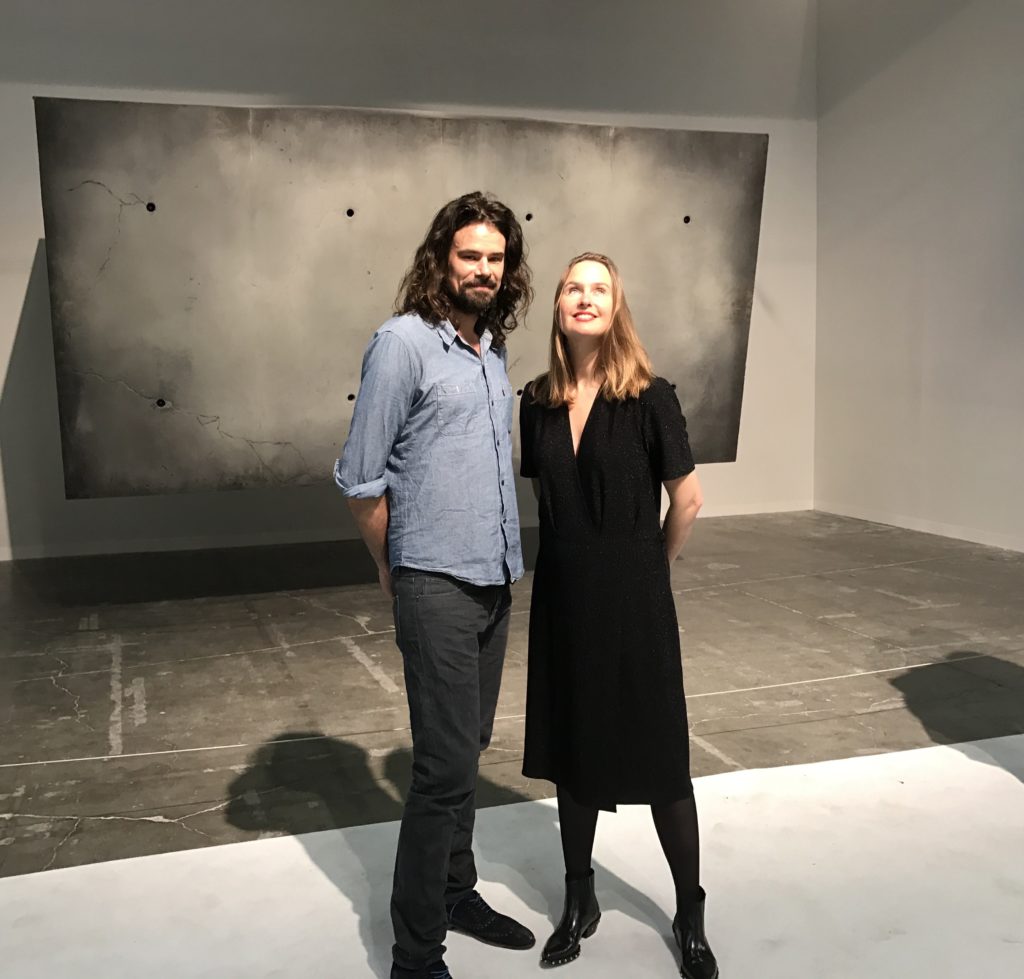
Artnet's editor-in-chief Andrew Goldstein set out to find the most pathbreaking artworks at this year's fair.

Andrew Goldstein

“Safety first” might be a good tagline for this year’s edition of the Armory Show, where many dealers seemed to respond to the uncertainty in the American air by bringing artworks that are comfortable in their familiarity, easily marketable in their traditional format, and often have an impressive physical presence. In other words, there are wall-rocket paintings galore. However, seeded here and there throughout Pier 94 are some genuinely audacious artistic statements that push the envelope forward (or at least expend a noble effort in trying).
Here are three artworks that may give a hint of what we’ll be admiring in museums in the 22nd century.
STUDIO DRIFT
Pace Gallery (New York/Palo Alto/etc.)
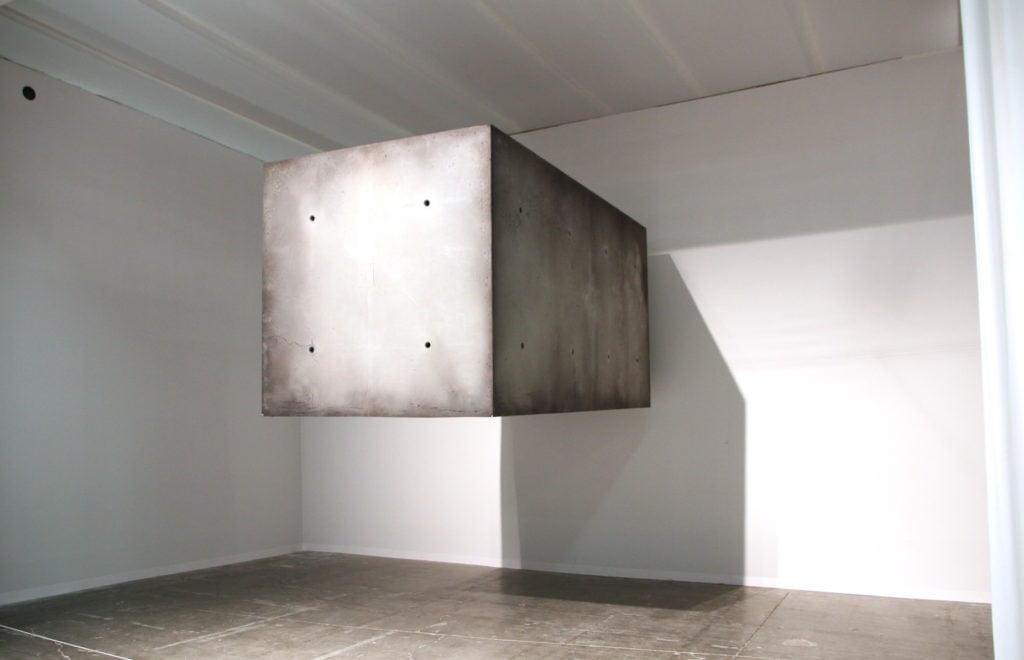
Drifter (2017) by Studio Drift at the Armory Show. Image by Henri Neuendorf
Easily the most mesmerizing piece of showmanship at the fair could be found at Pace Gallery’s booth, where a gargantuan concrete block hovered in midair behind a black velvet rope, slowly rotating itself in 360 degrees as if to say—like a Las Vegas magician—“Look, no strings.” Crowds of typically jaded VIPs gathered to watch the sculpture’s mystical ballet, wide-eyed. So how did the Dutch duo known as Studio Drift accomplish this feat? If it was a magic act it would be a shame to divulge, but since it’s art, and since the Greek for art (τέχνη) is the root of “technology,” here it goes. The truth makes it even more remarkable anyway.
First of all, the block is not solid concrete but rather a thin veneer of disguised foam; inside, the sculpture is filled with helium—like a balloon—and outfitted by a network of tiny fans that blow air currents through discreet apertures to hold the piece aloft. To control its movements, infrared cameras are nested around the top of the booth’s walls, locating the sculpture in space and communicating with the fans to ensure that it can adjust to air currents and stay on course. (In this way, it’s a bit like Steven Pippin’s impossible pencil sculpture, but with the added “wow” factor of levitation.) Every 40 minutes or so, a set of white curtains are drawn over the booth, in the style of a proper magic act, and the helium is replenished. If you want one, it’ll set you back $350,000.
But if you talk to the lovely artist/designers behind Studio Drift, Ralph Nauta and Lonneke Gordijn, they’ll tell you that the piece is not so much about its technical wizardry as it is about a conceptual proposition. It goes back to the Enlightenment. In 1516, Sir Thomas More imagined in his Utopia that a material could exist that is more durable than stone or wood and easier to use, able to build resilient houses. Inventors took the cue and started experimenting. A few years later, concrete was born.
“Back in the day, concrete was a sci-fi idea,” says Gordijn. “This [sculpture] is about the imagination. If we keep relying on what we know, we will never change or innovate. Rather than just following the current system, we’d rather find out what else is out there.” Nauta took it a step further: “If we want to survive as a race, we need to evolve and our evolution is now involved with technology. One day, we’ll be able to meld our minds with machines and become immortal.”
Perhaps one day. For the moment, they suggest, we may have at least reached a point in our evolution where we’ve moved beyond caring whether the block is really concrete or merely a simulacrum. “The question with reality now is: how important is it that something is real?” says Gordijn. “Real news, fake news—everything blends together. Instead of trying to separate these things, maybe we should accept this new environment and adapt to it.”
EVAN ROTH
Carroll/Fletcher (London)
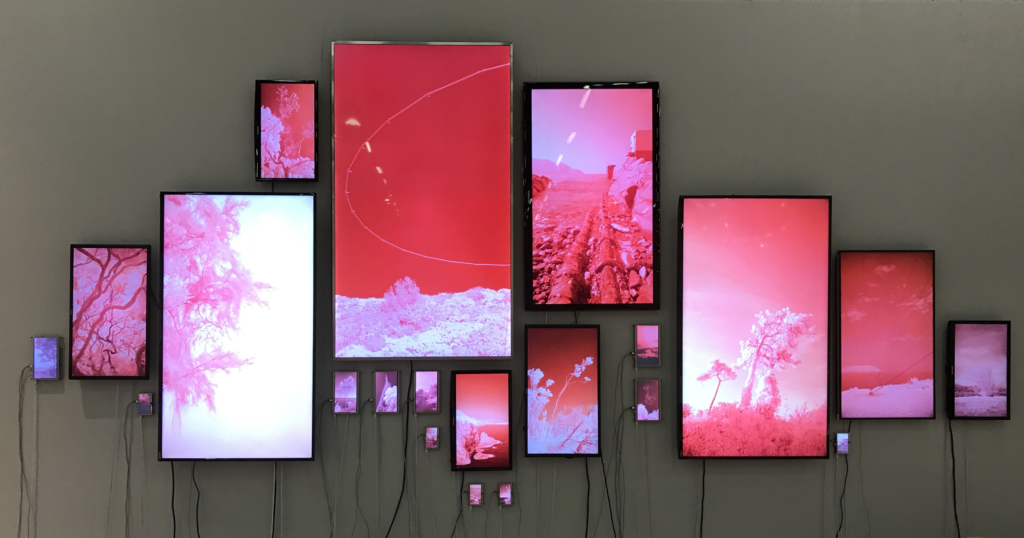
Evan Roth’s installation at the Armory Show. Courtesy Andrew Goldstein
In the dining area at the back of Pier 94, where fairgoers are noshing on Black Seed bagels and Poke, Armory Show “Platform” curator Eric Shiner has sited a different kind of nourishment in the form of a 21-screen video installation. It’s the work of the Paris-based American artist Evan Roth, a onetime hacker who got his start as part of F.A.T. Lab, a mischievous tech collective dedicated to D.I.Y. experimentation in the public domain. (Including such stunts as driving around in a makeshift Google Street View car, referred to as “Notorious R&D.”)
Eventually, however, in light of a government crackdown on hackers and the increasing corporatization of the Web, Roth found himself falling out of love with the internet and its manifold possibilities. He hatched an elaborate plan to rekindle the flame: he would travel around the world searching for the places where the internet makes itself visible—such as the beaches where bundles of fiber optic cables slither out of the ocean—and document the natural setting in the style of Romantic landscape painting. As an added twist, he decided to shoot these locations on infrared cameras, a reference to the method ghost-hunters use when trying to make the invisible visible.
While one first glance at the videos—displayed on a deliberately eclectic array of screens, from smartphones to TVs, and priced at $100,000 as a set—may recall a mashup of other artists, say, Trevor Paglen and Richard Mosse, what makes them interesting is that they also echo a Robert Smithson “nonsite:” They beam a spot in the natural-cum-internet world into the art fair. That’s because each video is stored on a server in its place of origin, so that the footage is actually streaming to the fair directly from the location it was shot. As with the Studio Drift piece, the message seems to be that we live in a hybrid world of nature and technology, and we might as well get used to it.
MATTHEW METZGER
Arratia Beer (Berlin)
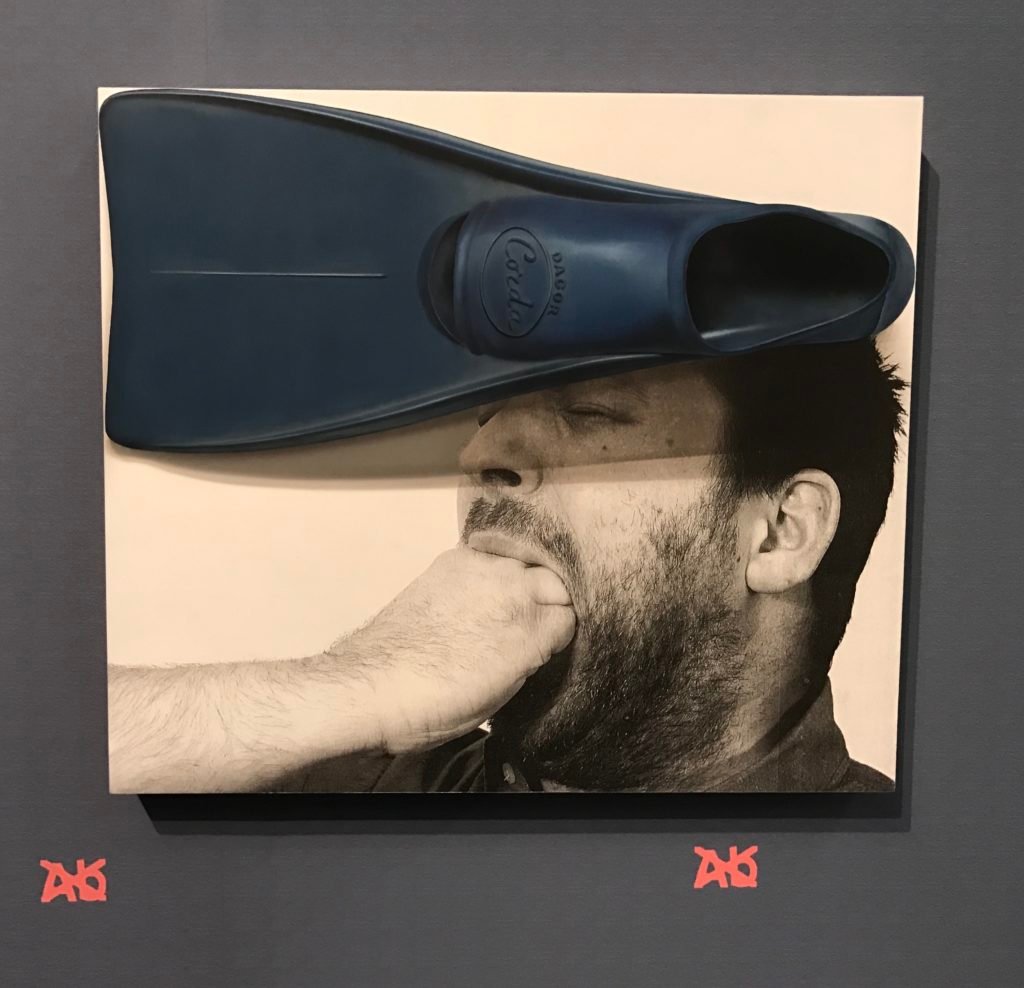
Matthew Metzger at Arratia Beer. Courtesy Andrew Goldstein
Not all innovation at the fair has to do with technology, as one discovers in Arratia Beer’s solo booth by Matthew Metzger, which the Chicago-based artist has titled, gutsily and with no small bravado, “New Abstract Expressionism.” Looking at the selection of small, often figurative works on display, an acceptable reaction might be, “Huh?” But Metzger’s argument is that, while classic AbEx of the postwar era was gestural abstraction as a reaction against classical figuration, we’ve moved beyond the advancements of “nonobjective” art by now. Today, abstraction occurs on a more conceptual level, he proposes, so he’s filled the booth with paintings that riff on the idea of Abstract Expressionism.
For instance, Michael Fried wrote that the “action” painting of artists like De Kooning and Pollock originated in the shoulder, so Metzger pairs a painting of the single for U2’s “I Will Follow,” which features a boy’s shoulder, with a white monochrome featuring the faint outline of that shoulder. The artist also thinks that much of the aura of AbEx came from the theories around it, and that language itself is an abstraction—so he presents his paintings on top of wallpaper patterned with the letters “AB” (the beginning of the alphabet) overlaid with a negating “X.” Other paintings continue on this theme of non-communication, like one of a face mask and two others of men with a fist in their mouths (that are obscured by trompe-l’oeil swimming flippers, because one is “flipped” upside down, according to an Arratia Beer dealer).
It’s all definitely very abstract! Less abstract, in a way, and more easily expressed, are the prices: between $3,000 for the smaller paintings and $11,000 for the larger fist-in-mouth gentlemen.
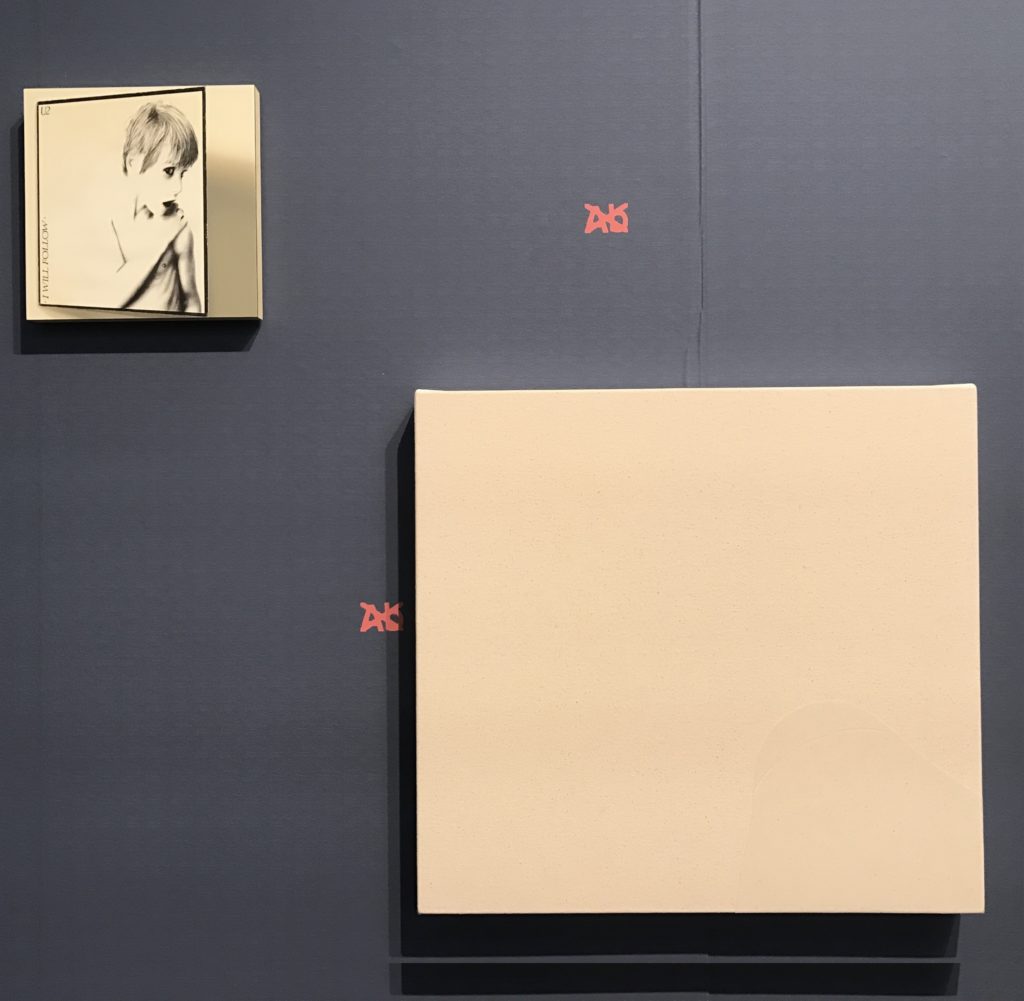
The shoulder paintings from the booth. Courtesy Andrew Goldstein